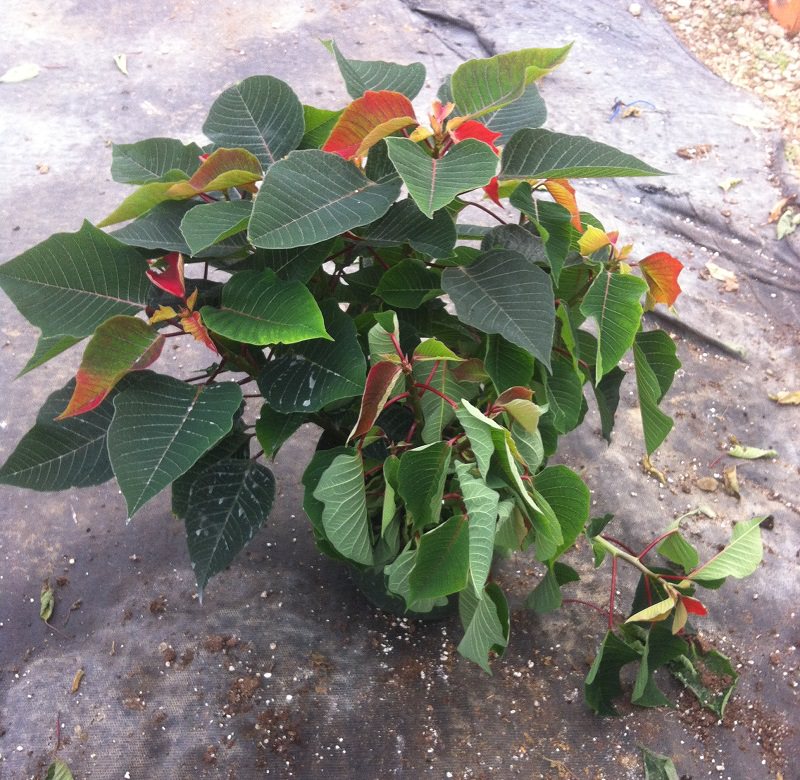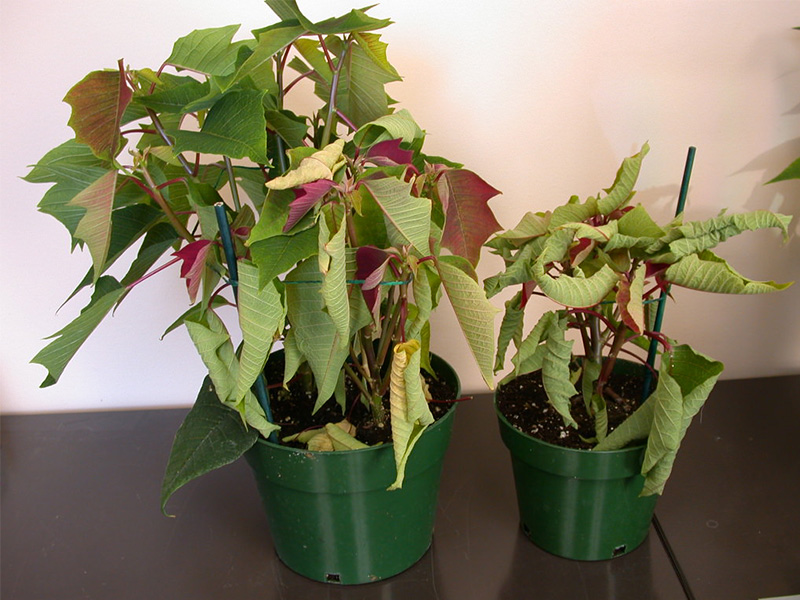Preventing Root Rot Disease in Poinsettia


Poinsettias have a longer production cycle than most greenhouse crops and one of the smallest sales windows. Therefore, anything that delays or stunts the crop can lead to potential crop failure.
One of the most common causes of poinsettia production delay is root disease in the crop. Disease management should be focused on prevention as opposed to control. Once a root disease has infected a plant and symptoms become visible, control is difficult and often ineffective. Understanding the pathogen sources and environmental conditions that promote infestations helps to minimize these situations before a disease can take hold.
The most common sources of root rot pathogens in poinsettias are poor greenhouse sanitation, infected stock plants or cuttings, contaminated water and/or used growing medium. A new, packaged growing medium is generally not a source of root pathogens unless it has inadvertently become contaminated in handling or storage.
Poor Greenhouse Sanitation
By far, the most common source is poor greenhouse sanitation. Growers should remove any weeds and trash under benches and treat both benches and floors with a sanitizing agent between crops.
Contaminated Cuttings
Purchasing cuttings from a reliable source reduces the potential of receiving contaminated stock or cuttings. Close monitoring of plants for the first few days after receiving them and treating them with a fungicide if diseases are present should limit the impact of contaminated stock or cuttings.
If the water source is from a pond or is recycled, a sterilization system should be used. Never reuse old growing media.
Poor Drainage
One environmental condition common to almost all root diseases is poor drainage or water-logged conditions in the growing medium (Figure 1). To minimize these conditions, a grower should only water when the medium is dry, supply adequate air movement, and above all, maintain sanitation to avoid contamination.

How to Monitor Root Diseases
All root rot diseases will ultimately result in root death and wilting of the poinsettia crop. Once wilting occurs, the disease has advanced to the point that it is no longer possible to save the plant.
To monitor for root diseases, regularly, gently remove a poinsettia from its container and examine the roots. Healthy roots are white and firm while diseased roots are dark in colour and soft or “slimy” to the touch.
If diseased plants are found, they should be removed from the growing bench and discarded to limit the spread of the disease to other plants on the bench. A fungicide drench should also be applied.
Most Common Root Rot Diseases of Poinsettias and Their Symptoms
Pythium
Pythium affects the roots (more than the stems) and turns them brown with the outer portion of the root easily sliding off, leaving bare inner layers (stele) exposed. Pythium can result in premature flowering. Plants that are fertilized at high rates and overwatered are often more susceptible to Pythium.
Rhizoctonia
With a Rhizoctonia infestation, the stems will appear wet and soft at the soil line, the roots will be brown, and the lower leaves will turn yellow and fall off (Figure 2). This disease most often strikes early in the production cycle when the temperatures are high.

Fusarium
Fusarium causes roots and stems to soften and can develop a cream-to-orange colour at the infection site.
Thielaviopsis
Thielaviopsis most often attacks the plants late in the season, with the roots becoming black and the plant wilting. It thrives in growing media with a pH above 5.6 and prefers wet growing media.
Phytophthora
A Phytophthora infestation looks very similar to Rhizoctonia and is also most likely to strike when temperatures are high and plants are water-logged.
While other root rot diseases can strike poinsettias, these are the five major disorders. Remember that the most important tools needed to help produce a high-quality, disease-free poinsettia crop are greenhouse sanitation and a systematic monitoring program to catch any diseases before they spread.